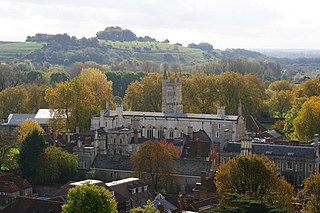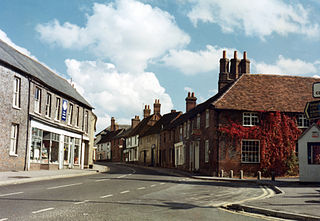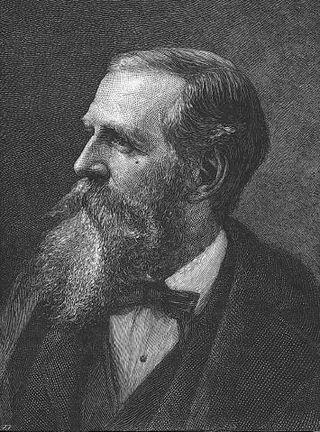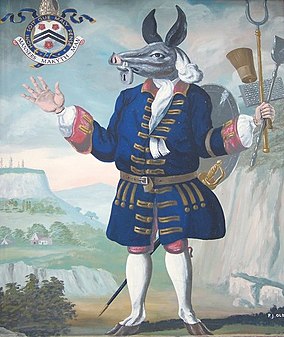
Hampshire is a ceremonial county in South East England. It is bordered by Berkshire to the north, Surrey and West Sussex to the east, the Isle of Wight across the Solent to the south, Dorset to the west, and Wiltshire to the north-west. The city of Southampton is the largest settlement.

Winchester College is an English public school with some provision for day attendees, in Winchester, Hampshire, England. It was founded by William of Wykeham in 1382 as a feeder school for New College, Oxford, and has existed in its present location ever since. It is the oldest of the nine schools considered by the Clarendon Commission. The school has begun a transition to become co-educational, and has accepted male and female day pupils from September 2022, having previously been a boys' boarding school for over 600 years.

Kingsclere is a large village and civil parish in Hampshire, England.

Robert Swain Gifford was an American landscape painter. He was influenced by the Barbizon school and became a member of the Society of American Artists.

Tiger Inn is one of the eleven active eating clubs at Princeton University in Princeton, New Jersey. Tiger Inn was founded in 1890 and is one of the "Big Four" eating clubs at Princeton, the four oldest and most prestigious on campus. Tiger Inn is the third oldest Princeton Eating Club. Its historic clubhouse is located at 48 Prospect Avenue, Princeton, New Jersey, near the Princeton University campus. Members of "T.I." also frequently refer to the club as "The Glorious Tiger Inn."

Nancy Graves was an American sculptor, painter, printmaker, and sometime filmmaker known for her focus on natural phenomena like camels or maps of the Moon. Her works are included in many public collections, including those of the National Gallery of Art, the Brooklyn Museum of Art, the Smithsonian American Art Museum, the National Gallery of Australia (Canberra), the Des Moines Art Center, Walker Art Center (Minneapolis), and the Museum of Fine Arts. When Graves was just 29, she was given a solo exhibition at the Whitney Museum of American Art. At the time she was the youngest artist, and fifth woman to achieve this honor.

The Milkmaid, sometimes called The Kitchen Maid, is an oil-on-canvas painting of a "milkmaid", in fact, a domestic kitchen maid, by the Dutch artist Johannes Vermeer. It is in the Rijksmuseum in Amsterdam, the Netherlands, which regards it as "unquestionably one of the museum's finest attractions".

Minstead is a small village and civil parish in the New Forest, Hampshire, about 2 miles (3.2 km) north of Lyndhurst. There is a shop and a pub, the Trusty Servant. Sir Arthur Conan Doyle's grave is under a large tree at the back of the 13th-century All Saints' church.

The Monarch of the Glen is an oil-on-canvas painting of a red deer stag completed in 1851 by the English painter Sir Edwin Landseer. It was commissioned as part of a series of three panels to hang in the Palace of Westminster, in London. As one of the most popular paintings throughout the 19th century, it sold widely in reproductions in steel engraving, and was finally bought by companies to use in advertising. The painting had become something of a cliché by the mid-20th century, as "the ultimate biscuit tin image of Scotland: a bulky stag set against the violet hills and watery skies of an isolated wilderness", according to the Sunday Herald.

Serjeant John Hoskins or Hoskyns was an English poet, scholar of Greek, lawyer, judge, and politician.
Garrick Salisbury Palmer was an English painter, wood engraver, photographer and teacher.

The account of the beheading of Holofernes by Judith is given in the deuterocanonical Book of Judith, and is the subject of many paintings and sculptures from the Renaissance and Baroque periods. In the story, Judith, a beautiful widow, is able to enter the tent of Holofernes because of his desire for her. Holofernes was an Assyrian general who was about to destroy Judith's home, the city of Bethulia. Overcome with drink, he passes out and is decapitated by Judith; his head is taken away in a basket.

George Arnald was a British painter who specialised in landscapes, including topographical views to illustrated county histories. He is best known for his celebrated painting depicting the Battle of the Nile.
John White was a Headmaster and Warden of Winchester College during the English Reformation who, remaining staunchly Roman Catholic in duty to his mentor Stephen Gardiner, became Bishop of Lincoln and finally Bishop of Winchester during the reign of Queen Mary. For several years he led the college successfully through very difficult circumstances. A capable if somewhat scholastic composer of Latin verse, he embraced the rule of Philip and Mary enthusiastically and vigorously opposed the Reformation theology.

The hircocervus or tragelaph, also known as a goat-stag, was a legendary creature imagined to be half-goat, half-stag.
Sir John Hawles (1645–1716), of Lincoln's Inn, was an English lawyer and Whig politician who sat in the English and British House of Commons between 1689 and 1710.

The Maricel Museum is a museum located in the centre of Sitges; reopened after a major refurbishment in 2015.

Jupiter and Antiope is an oil painting by the French artist Antoine Watteau. It is also known as the Satyr and the Sleeping Nymph and was probably painted between 1714 and 1719. Intended to be placed over a doorway, today it hangs in the Musée du Louvre in Paris.

Hans Holbein the Younger painted the Portrait of Erasmus of Rotterdam several times, and his paintings were much copied, at the time and later. It is difficult to disentangle Holbein's original work from that of his workshop and other copyists. Possibly five largely original versions survive, as well as a number of drawings made as studies.


















